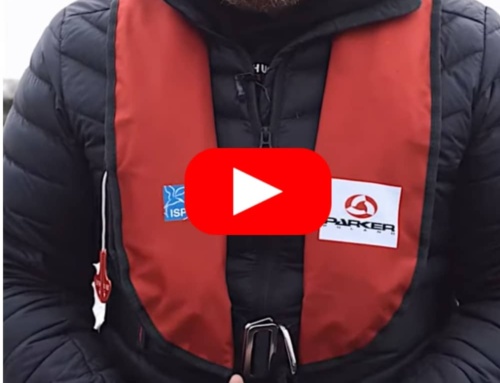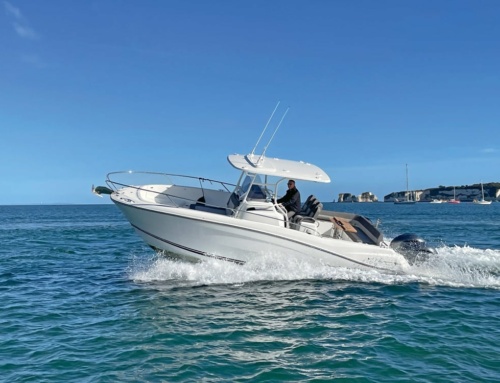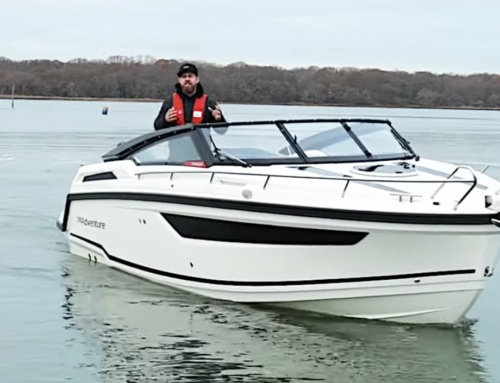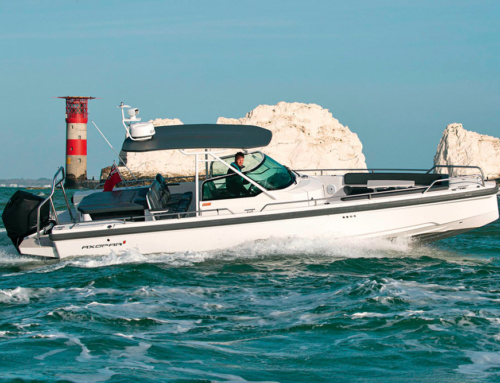Paul Glatzel discusses the pros, and one or two con(cern)s, in tackling the high-adrenalin activity of jet skiing …
This is Powerboat and RIB magazine, so why are we discussing jet skis, we hear you ask. Well, apart from the fact that they float, they are fast and they can certainly be loads of fun. Moreover, we’re seeing so many more jet skis on the swim platforms of boats as tenders or heading out in groups alongside mates in a boat that we figured a bit of focus on them wouldn’t go amiss.
Before we get started, let’s tackle the whole ‘is it a jet ski or a personal watercraft (PW or PWC)’ question. ‘Jet Ski’ is a trade name owned by Kawasaki and you’ll see the word down the side of their PW models. The reality, however, is that the word has become the common description for all PW, and all of us tend to refer to a ‘jet ski’ or ‘jet skiing’ rather than the generic ‘personal watercraft’ term adopted to describe all of the brands. It’s a nice bit of free advertising for Kawasaki too!
In the UK, the two main brands are Yamaha, with their ‘Waverunners’, and Sea-Doo, whose craft tend to be referred to just as ‘Sea-Doos’. Kawasaki have also recently re-entered the UK market after a good few years away.
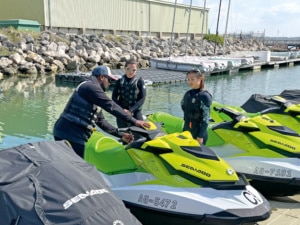
The issue with PW is that there’s probably no other sort of vessel that can provoke the extremes of emotion that a jet ski does. For some, they are the hooligans of the sea or local beach, but the reality is almost always very different. Yes, there are some muppets who use PW, but there are idiots in every walk of life. The issue with PW is that they tend to get closer to beaches and areas where other people are gathered, and they often run too fast through anchorages, so they can be right in people’s faces, whereas people being idiots on other craft tend to be less visible. The key point to come from this is that we should make sure that our use, our mates and our kids don’t attract attention for the wrong reasons and don’t get PW banned from areas as we can all coexist if we try. If your mate is being an idiot, then educate them, as perhaps they just don’t realise how they will be being viewed and the danger they may create.
So what can and should you do to have a great time afloat on a PW?
You won’t be surprised to hear me suggest that it all starts with training. A PW may not be the most complicated vessel afloat, but with the huge power and speed that a PW is capable of comes a responsibility to understand how best to harness this. There are also various control systems available, and being able to show really good slow-speed skills on a PW will set you apart from the crowd.
So what are some of the ‘top tips’ if you are heading out with a group of mates with some boats and some PW together?
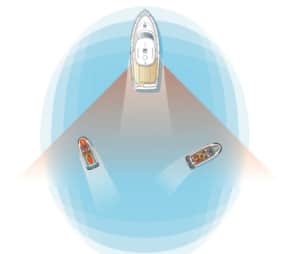 Letting mates have a go – getting others on your PW – is great, but do it within sensible parameters. Make sure you explain the use and wearing of the kill cord. Explain about keeping a lookout and emphasise the need to really look properly before turning. Make sure turns are gentle and that they communicate clearly with passengers and consider what any manoeuvre made will be like for them. They need to know and apply the Collision Regulations and follow the rule to slow down as they get near other vessels and abide by speed limits. Ensuring they use the PW in an area of clear water is key too.
Letting mates have a go – getting others on your PW – is great, but do it within sensible parameters. Make sure you explain the use and wearing of the kill cord. Explain about keeping a lookout and emphasise the need to really look properly before turning. Make sure turns are gentle and that they communicate clearly with passengers and consider what any manoeuvre made will be like for them. They need to know and apply the Collision Regulations and follow the rule to slow down as they get near other vessels and abide by speed limits. Ensuring they use the PW in an area of clear water is key too.
Wave and wake jumping can be great fun but there can be big risks – the impact on the driver and passenger coming off a wave can be massive, and if crossing the wake of a larger vessel there can be blind spots where other fast-moving vessels may not be seen. Being further back from other craft improves visibility and is more considerate to those other vessels.
So whether you are a regular PW rider or just fancy giving it a go, get out there, but make sure you and others do so in a sensible way. Keep safe and have a great time afloat!
RYA PW Handbook
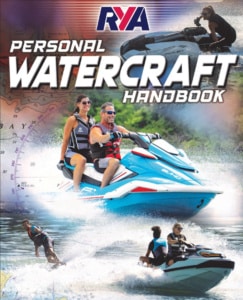 The RYA one-day Personal Watercraft Certificate of Proficiency is aimed at giving you the skills needed to get you and your family afloat safely.
The RYA one-day Personal Watercraft Certificate of Proficiency is aimed at giving you the skills needed to get you and your family afloat safely.
It covers everything from basic controls, slow-speed handling and the kit you need to be carrying through to higher-speed handling and cornering and how to apply the Collision Regulations when afloat.
It’s a great course whether you have lots of boating or PW experience or are new to it. The course now comes with the 2022 updated version of the RYA PW Handbook.
Check out Powerboat and RIB TV where Paul Glatzel and Tom Montgomery-Swan discuss all aspects of getting afloat.
The RYA Powerboat Handbook and the RYA Advanced Powerboat Handbook are available in print or as e-books from the RYA shop: rya.org.uk/shop.
Paul Glatzel is an RYA powerboat trainer and wrote the RYA Powerboat Handbook and the RYA Advanced Powerboat Handbook. He runs Powerboat Training UK and Marine Education in Poole and Lymington (www.powerboattraininguk.co.uk and www.marine-education.co.uk).


